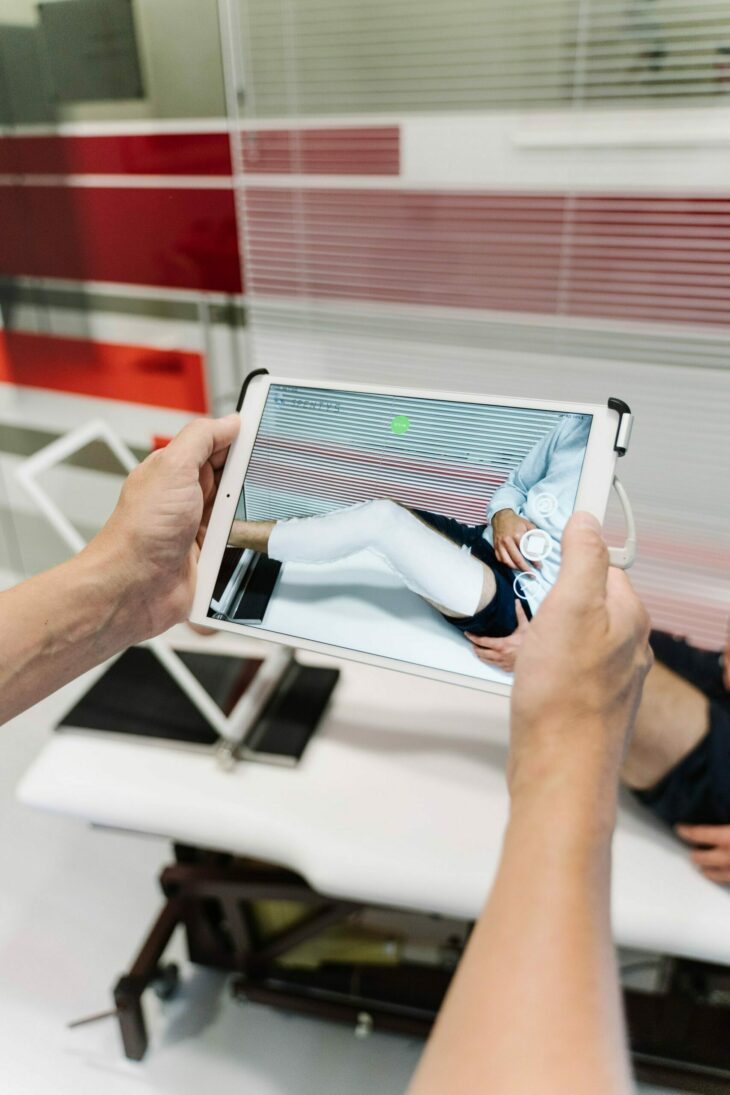When a person does not routinely move their muscles, the muscles begin to thin and waste away, a condition known as muscle atrophy. Although muscle atrophy can be treated through exercise, it is not feasible for many patients, including those on bed rest. Scientists have been exploring ways to directly stimulate muscle tissue to promote tissue regeneration and reduce muscle atrophy.
Previously, scientists have demonstrated that stretching pieces of engineered tissue in the lab increased cell production and cell growth. Although devices are routinely used to externally stretch human tissues, such as those used in orthodontics, scientists have yet to build a device to stimulate tissues inside the body. Scientists face two main challenges for developing an internal device. The first challenge is designing a system that can mechanically generate forces along the tissue surface. The second challenge is successfully adhering the device to the muscle tissue in a way that will effectively stretch or compress the muscle.
Recently, scientists from Harvard University built a device that addressed these two challenges. To generate forces along the tissue surface, they designed a spring made out of nickel and titanium, called nitinol. When these two metals are mixed together, they form a material with unique mechanical properties called a shape memory alloy.
The spring is originally formed in a tight coil. When it is stretched at room temperature, the spring changes shape, or deforms, and holds this new shape. When the spring is heated, in this case by electric current, the spring “remembers” its tight coil shape and contracts back to it. When the electric current is turned off, the temperature in the spring drops and it can again be deformed into a stretched shape. Shape memory alloys have been safely used in other medical devices and proven to be biocompatible.
To adhere the spring device to muscle tissue, the scientists first embedded the spring inside a stretchy rubber called an elastomer. Then they added a sticky yet strong gelatin-like material to the elastomer called a hydrogel. Previous researchers have shown that tough hydrogels can adhere strongly to human tissues. The scientists named this new device MAGENTA, which stands for mechanically active gel-elastomer-nitinol tissue adhesive.
The scientists then performed several experiments to test the effectiveness of MAGENTA. First they attached MAGENTA to a piece of engineered tissue in the lab and applied an electric current through the wire. As the wire contracted, the surrounding elastomer also contracted, which then caused the underlying tissue to squeeze together. When the current was turned off, the spring and tissue relaxed back, confirming MAGENTA operated as the scientists expected. They performed a similar successful experiment on muscle tissue removed from the hind leg of a mouse.
Next, the scientists set out to test MAGENTA in living tissue. They implanted the device on the large muscle in the hind leg of live mice. When electric current was applied through the wire, the scientists observed the skin covering the device contract. They also confirmed the muscle was moving with the device using high-resolution ultrasound imaging. The scientists observed only mild inflammation in the mice’s stimulated muscles and no severe adverse effects, confirming biocompatibility.
The scientists then designed an experiment to learn if MAGENTA could treat muscle atrophy. They immobilized the hind leg of mice to induce muscle atrophy and implanted MAGENTA into half the mice to stimulate the immobilized leg muscle. After two weeks, the scientists measured higher levels of protein synthesis in the leg muscles of the mice treated with stimulation. The muscles in the mice treated with MAGENTA were bigger and heavier than in the mice that were not treated. The scientists also measured the force that the muscles could expel and found the treated mice generated forces much higher than the untreated mice. These forces were actually similar to those generated in muscles of healthy, active mice.
One drawback to MAGENTA application is the need to have wires attaching the device to an electric source outside the body. The scientists observed the nitinol spring could heat and contract by shining a laser on the device. They then implanted a wireless MAGENTA onto the muscle of a mouse leg. They shone a laser onto the mouse leg and confirmed the device stimulated the muscle. This demonstrated that the laser could remotely activate MAGENTA through a layer of skin.
Although the focus of this study was to develop a biomedical device to treat muscle atrophy, the scientists think MAGENTA could be used on other types of human tissue such as skin and heart. However, wireless application via laser heating is currently limited by how deep in the body it can be implanted. The scientists suggest future work to increase light sensitivity could address these limitations and open up possibilities for other applications.


